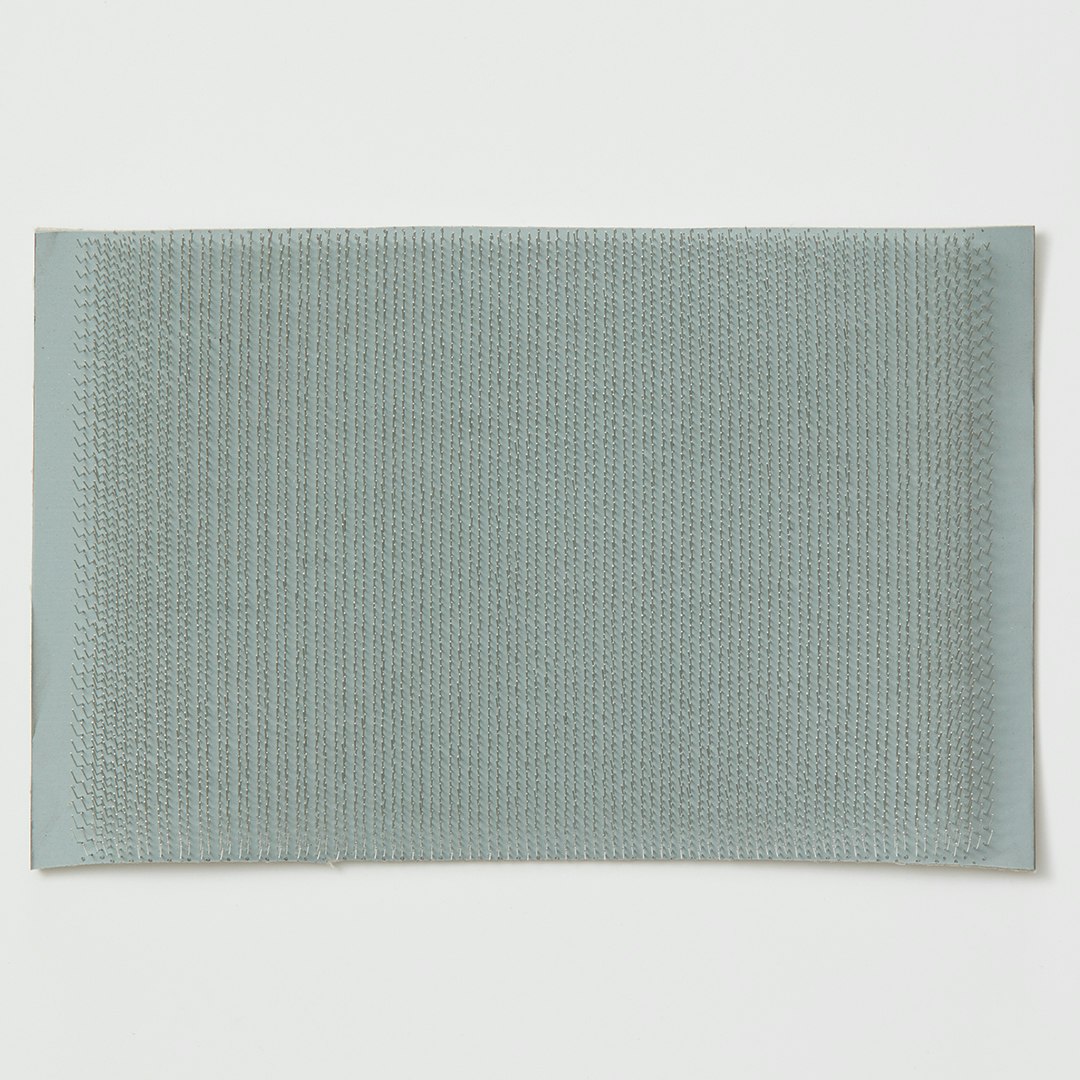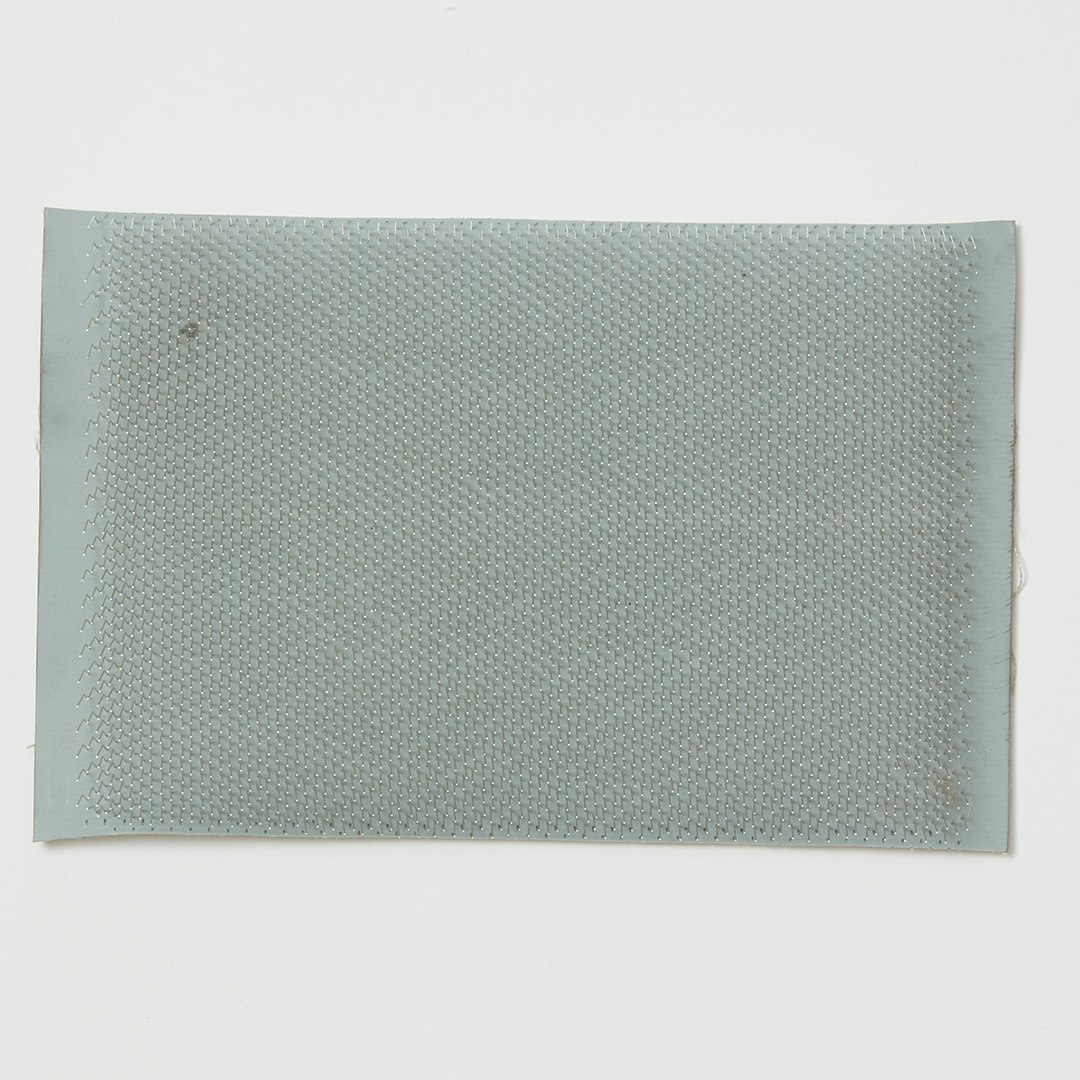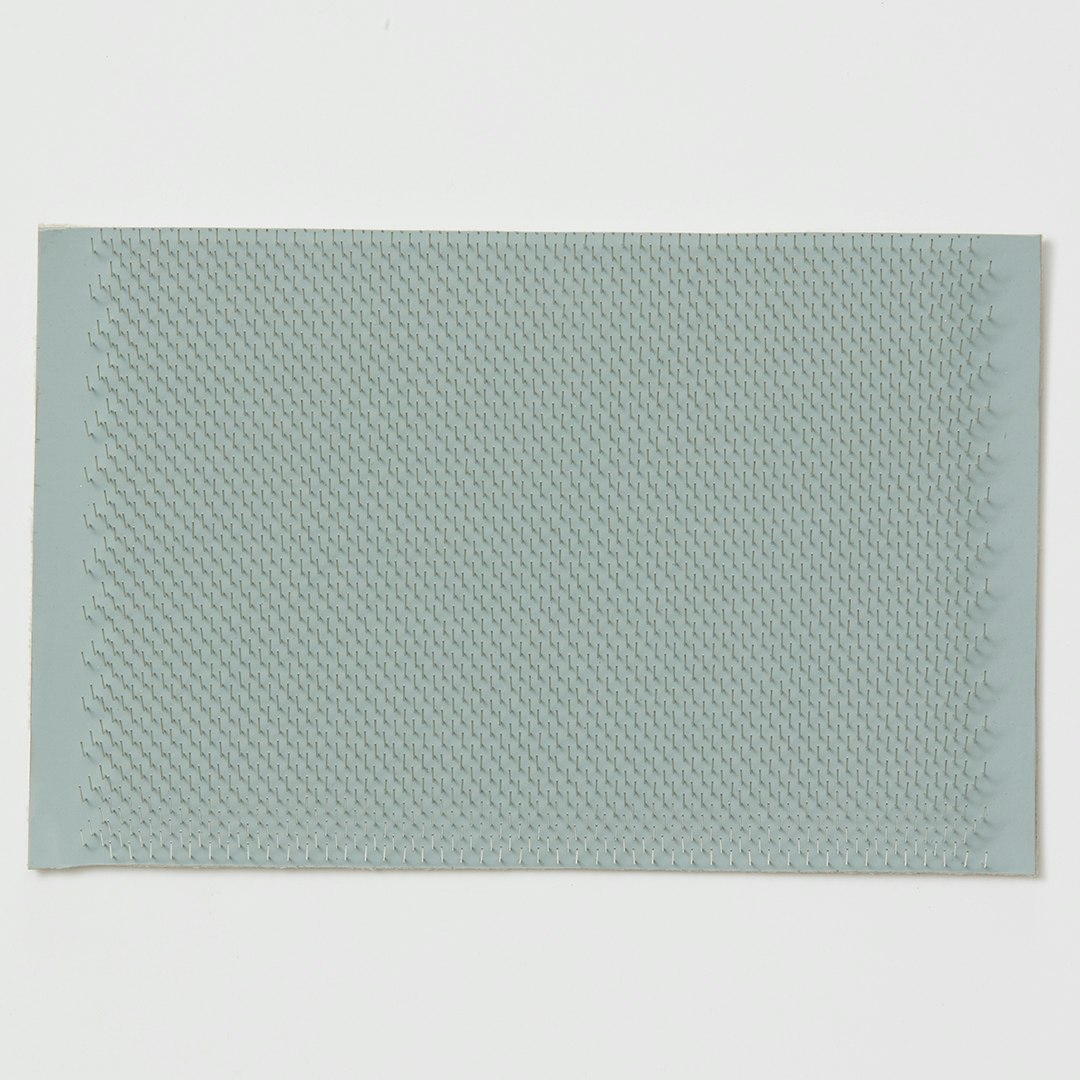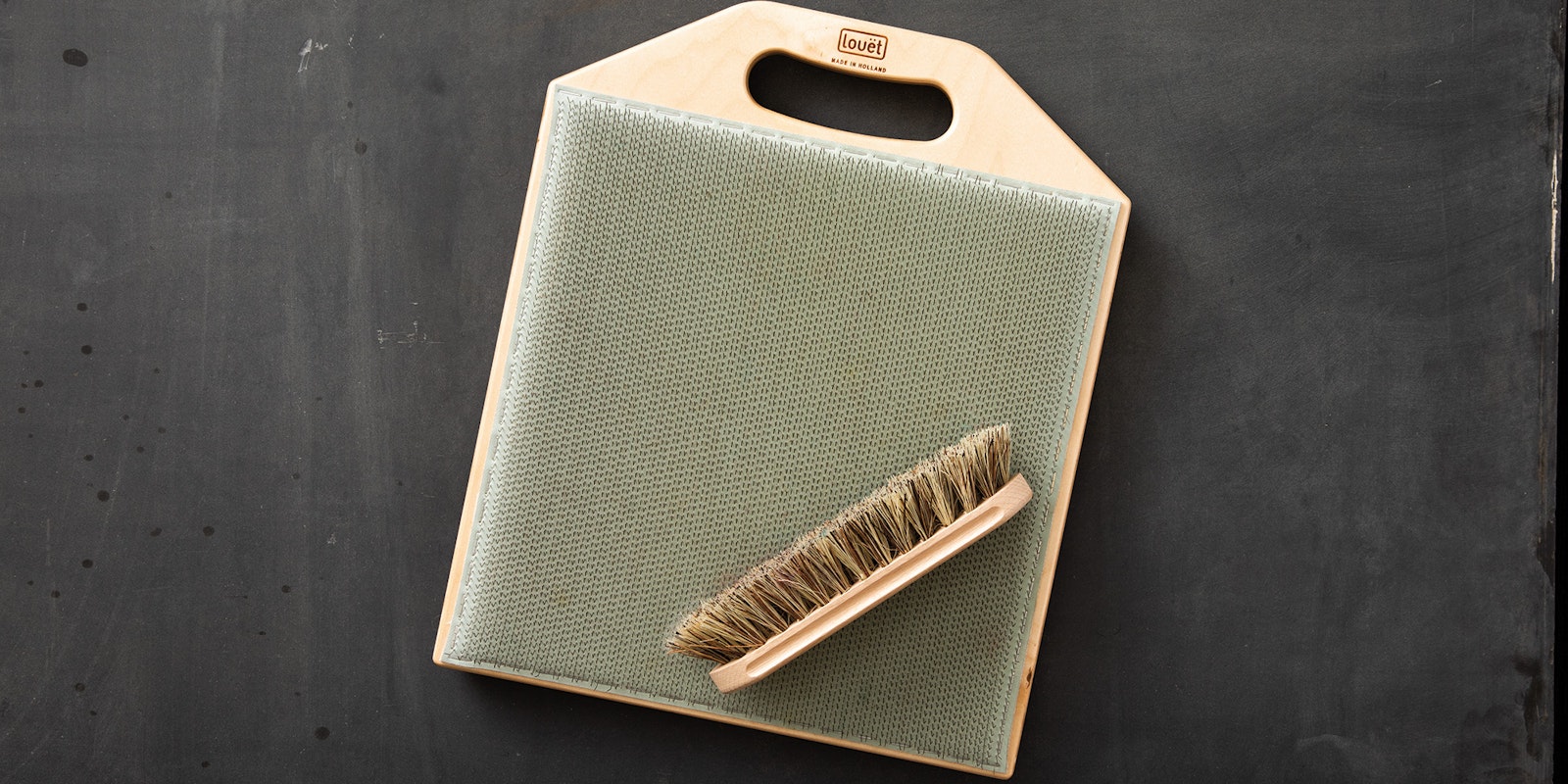The most important factor in choosing a carding tool is the carding cloth’s teeth per inch (tpi). Tpi measures how densely the teeth are packed together. That density in turn determines how much texture is removed and how much color is blended in a single pass. The higher the number, the finer the carding cloth and the more smooth and blended the fiber becomes. Think of tpi as it applies to a hairbrush: If you have fine hair, you use a brush with lots of bristles close together. This gives a smooth finish. When you have curly hair, you use a wide-tooth comb or a brush with stiff bristles that are far apart. These bristles leave the curls together rather than separating and smoothing them out.
 Howard Brush 190 tpi carding cloth, donated to author. Photo by George Boe
Howard Brush 190 tpi carding cloth, donated to author. Photo by George Boe
With this in mind, you can determine which carding tool is right for you. If you want to card smooth, lofty batts and rolags with little to no texture or blend fibers and colors together thoroughly, then a fine-tooth carder (tpi of 120 and above or 90 and above for a blending board) is the one for you. Fine fibers are best used on high-tpi carding equipment. To card more textured or coarser fiber on a tool with a high tpi measurement, it is important to pick open the fiber first. With a high-tpi drumcarder, fiber should be carded in thin layers. When texture is desired, it is best to add it directly to the top of a drumcarder, bypassing the tray and licker-in. Multiple passes of fiber on a high-tpi carding tool will blend colors and fibers smoothly and evenly.
 Howard Brush 90 tpi carding cloth donated to author. Photo by George Boe
Howard Brush 90 tpi carding cloth donated to author. Photo by George Boe
For most uses, including carding most wool, carding cloth with a tpi measurement around 72 is a happy medium. It can accommodate a range of fiber diameters, create somewhat textured fiber preparations, and blend and smooth moderately fine batts.
To keep lots of texture in the fibers and blend loosely, a coarse cloth is what you are looking for. A tpi of 50 and lower will give you a chunky, textured batt. If you are carding multiple kinds of fiber together, you will get bold variations on a single pass.
 Howard Brush 54 tpi carding cloth donated to author. Photo by George Boe
Howard Brush 54 tpi carding cloth donated to author. Photo by George Boe
Multiple passes are necessary to blend, and the blending tends to be less even and smooth. (Although coarse and textured fibers are best carded on low-tpi carders, fine fibers can also be carded on equipment with less dense carding cloth.) Because there is more space between the teeth, there is more room for textured fiber or funky inclusions.
Carding tools all do the same fundamental tasks, but they go about those tasks slightly differently. Once you know what you want to achieve, you should be able to figure out which tpi will meet your needs.
ESTHER RODGERS is a full-time fiber artist and wool sniffer. She lives in Mebane, North Carolina, with her husband, three spinning wheels, multiplying looms, and two chatty cats. Her videos Card Wool for Color and How to Spin Art Yarns are available from Long Thread Media. To follow her ridiculous schedule, find a workshop, or look into her studio, visit www.jazzturtle.com.
Originally published October 29, 2021; updated December 26, 2022.

